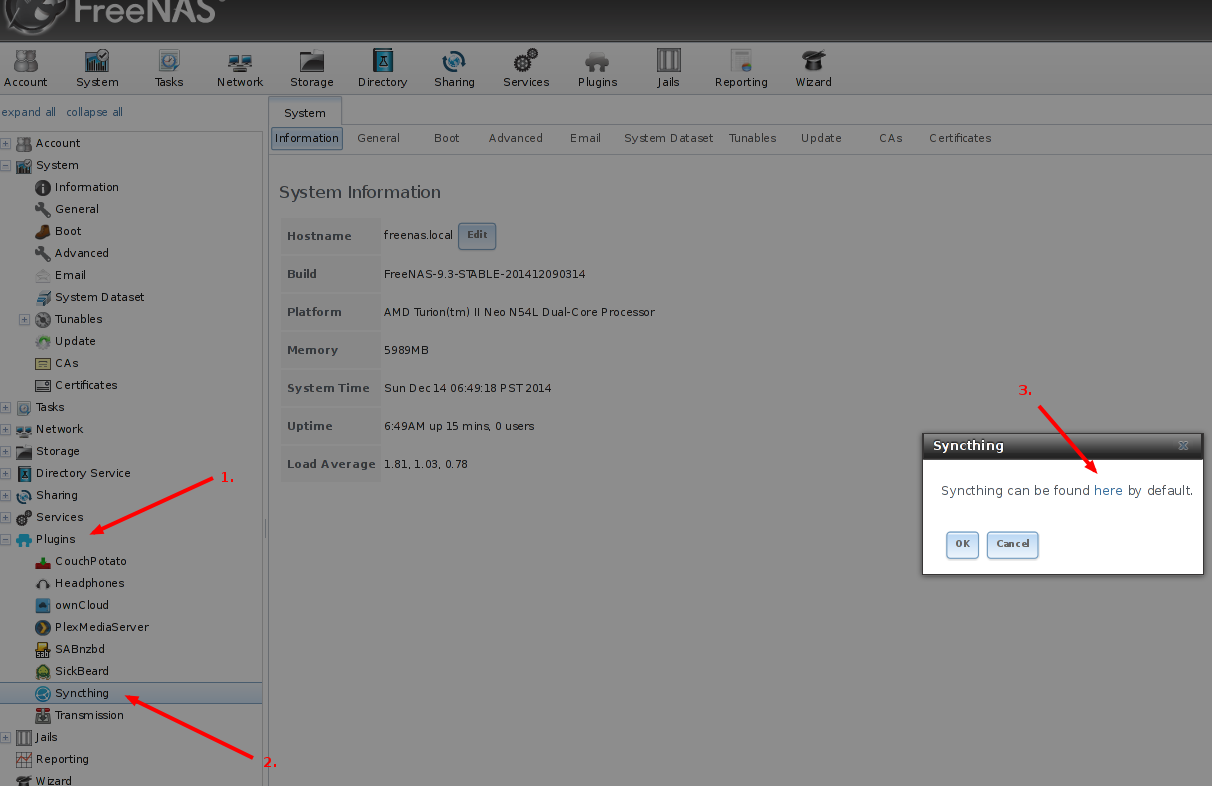
- #CANNOT INSTALL SYNCTHING FREENAS HOW TO#
- #CANNOT INSTALL SYNCTHING FREENAS FULL#
- #CANNOT INSTALL SYNCTHING FREENAS PC#
- #CANNOT INSTALL SYNCTHING FREENAS WINDOWS#
Mirrors: 2 way, 3 way and 1 way (which isn’t really a mirror).There are two major, and several minor, kinds of vdevs:.Instead, I must create a pool, add 2 disks as a mirror, then the next two, and so on.Ĭonceptually, I find this a bit annoying but it is what it is. That is, I can’t have 6 disks and create 3 mirrored vdevs. In practice, I understand that is a bad idea (so don’t copy the diagam above).īecause ZFS is pool centric, you cannot create a vdev without also adding it to a pool. In theory, this means ZFS can have a pool made up from mirrors and RAID-Z.

ZFS implements redundancy within vdevs (you pair individual disks together in mirrors).
#CANNOT INSTALL SYNCTHING FREENAS HOW TO#
Storage Spaces implements redundancy at the pool level (you make a “mirror” pool, throw disks at it, and Storage Spaces figures out how to allocate data such that required redundancy is met). My own point of reference is Microsoft Storage Spaces, which is different at this point. Mirrors, parity, RAID-Z all happens in vdevs, not in pools (although pools are aware of the redundency, and use it to their advantage). It’s also where all the meaningful redundency is implemented. The vdev is the fundamental ZFS unit of storage. In any case, the pool is the main thing you work with in ZFS: disks go into a pool to provide underlying storage, and a file system is presented on top of that pool.īut the pool is the main “thing”. Or perhaps “pool centric” is the right term. I’d go as far as saying that ZFS is a “pool orientated file system”. That is, ZFS is a way to pool lots of disks together and present them as a logical file system to your OS. You put them in a pool and ZFS does some magic to manage them all.įinally, there’s a file system presented on top of that. Wikipedia’s ZFS page has a surprisingly good conceptual description of vdevs and pools.
#CANNOT INSTALL SYNCTHING FREENAS FULL#
There isn’t enough detail in there for a full conceptual understanding, but its a good place to start. The FreeBSD handbook gives a useful glossery of ZFS concepts. I’ll be making notes as I go along, and reference relevant sections. You can see the material I’m basing this article on at the bottom, under References.
#CANNOT INSTALL SYNCTHING FREENAS WINDOWS#
This has 4 x 1TB spinning disks, is currently running Windows and uses Storage Spaces for redundancy.

#CANNOT INSTALL SYNCTHING FREENAS PC#
On a PC in the same network, go to the GUI and disable automatic updates. Start the syncthing service $ sudo service syncthing start Make sure you use https and enable authentication!

OPTIONAL: if you forward port 8384 (or any port you would like to use) on your router to you pi, you can access the GUI from anywhere in the world as long as you know you home(public) IP address.

Write down this number or copy it if you SSH'd to your pi.Ĭhange the config file so you can access the GUI from any PC within the network $ nano ~/.config/syncthing/config.xml Wait until you get something like: INFO: Device 7NNIJMJ-RQ657WA-RI5YH6L-RQ657WA-RQ657WA-VGKSUYP-U6QBJNA-RQ657WA #Run install_syncthing.sh $ curl -s | sudo bash


 0 kommentar(er)
0 kommentar(er)
